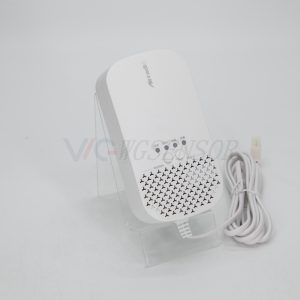Introduction:
In the winter months, as households rely on various heating sources to stay warm, the risk of carbon monoxide (CO) poisoning becomes more prevalent. Carbon monoxide, a colorless and odorless gas, is produced by the incomplete combustion of fuels such as wood, gas, and oil. To mitigate this silent threat, the use of carbon monoxide detectors is crucial, especially during the cold season when heating systems are in constant use.
1. Early Detection:
One of the primary advantages of carbon monoxide detectors in winter is their ability to provide early detection of this deadly gas. As homes are sealed tightly to conserve heat, any CO leakage can accumulate quickly, leading to dangerous concentrations. Detectors sound an alarm when CO levels reach a critical point, allowing residents to evacuate and seek fresh air before symptoms of poisoning arise.
2. Silent Menace of Winter Heating Systems:
During winter, various heating appliances, such as furnaces, space heaters, and fireplaces, are commonly used. These devices, if not properly maintained, can produce carbon monoxide as a byproduct of combustion. Carbon monoxide detectors act as a safety net, continuously monitoring air quality and alerting occupants to potential threats arising from these heating systems.
3. Preventing Cold Weather Health Risks:
In winter, individuals often keep windows and doors closed to retain warmth, creating an environment where carbon monoxide can accumulate without notice. CO poisoning symptoms, including headache, dizziness, nausea, and confusion, can be mistaken for common winter ailments. Carbon monoxide detectors help prevent the health risks associated with prolonged exposure by raising the alarm before symptoms become severe.
4. Backup Power Sources:
Winter storms and power outages are not uncommon, and the use of alternative heating sources, such as generators, becomes prevalent. However, generators can emit carbon monoxide if operated in enclosed spaces. Carbon monoxide detectors equipped with backup power sources, such as batteries, ensure continuous protection even during electricity disruptions, providing peace of mind during adverse weather conditions.
Conclusion:
In conclusion, the deployment of carbon monoxide detectors in winter is essential for safeguarding households from the silent threat of CO poisoning. These devices play a critical role in early detection, providing a vital layer of protection against the potential dangers associated with heating systems and alternative power sources during the cold season. By incorporating carbon monoxide detectors into home safety measures, individuals can enjoy a warm and secure winter without compromising their well-being.


Please contact us for free quotation by form below. We promise the quickest response within 24 hours: